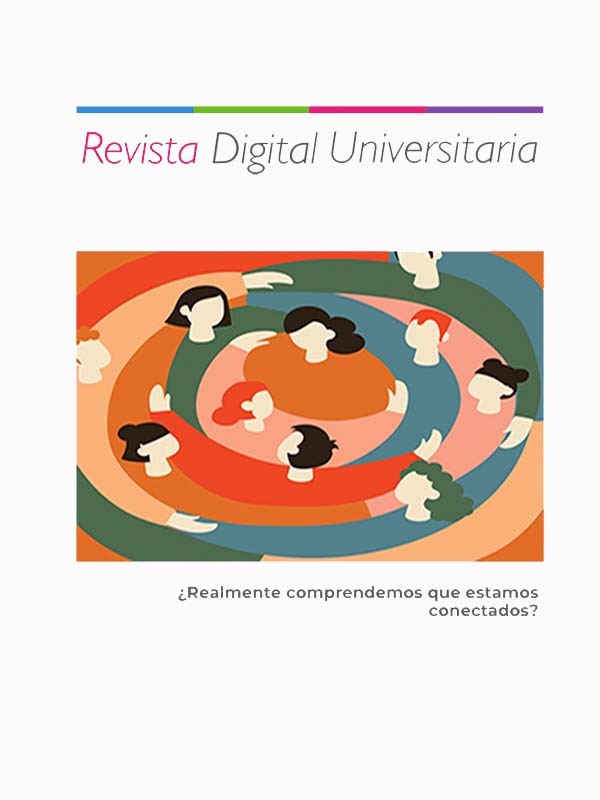The Trends, Perspectives, Areas and Colors of the Biotecnology
DOI:
https://doi.org/10.22201/cuaieed.16076079e.2022.23.4.10Keywords:
biotechnology, medicine, food, genetic modification, scienceAbstract
This article defines biotechnology as a growing area in the modern world, as well as exposing its past and future trends and perspectives. This, with the aim of making known the different nine branches of biotechnology, which is present from the production of more and better food to the creation of vaccines and drugs. This has improved the health of general population and has had an influence in their day-to-day life, which together contribute to shape our future.
References
@Alvy. (2007, 13 de mayo). Esperanza de vida. Microsiervos.
Allen, M., y Jaspars, M. (2009). Realizing the potential of marine biotechnology: CHALLENGES OPPORTUNITIES. Industrial Biotechnology, 5(2), 77-83. https://doi.org/10.1089/ind.2009.5.077.
Altman, A. (1999). Plant Biotechnology in the 21st Century: The Challenges Ahead. Electronic Journal of Biotechnology, 2(2), 1-2. https://cutt.ly/yKtjWzK.
Barcelos, M., Lupki, F. B., Campolina, G. A., Nelson, D. L., Molina, G. (2018). The colors of biotechnology: general overview and developments of white, green and blue areas. FEMS microbiology letters, 365(21). https://doi.org/10.1093/femsle/fny239.
Banrepcultural. (2021). Conferencia | ¿Qué es la biotecnología azul? ¿Para qué sirve? [Video]. YouTube. https://youtu.be/aah_hYFtbhc.
Biotechnology Innovation Organization (bio). (s.f.). What is Industrial Biotechnology? https://archive.bio.org/articles/what-industrial-biotechnology.
Biolyse. (2018, 27 de septiembre). How is Biotechnology Used in Medicine? http://www.biolyse.ca/how-is-biotechnology-used-in-medicine/.
Butte, A. (2001). Challenges in bioinformatics: infrastructure, models and analytics. Trends In Biotechnology, 19(5), 159-160. https://doi.org/c9qfb8.
Chilebio. (2019, 17 de octubre). Estados Unidos aprueba consumo de nuevo algodón biotecnológico comestible. https://cutt.ly/FKkqVId.
(cnb – csic, 2017). Bioinformática para genómica y proteómica: Juan Carlos Oliveros [Video]. YouTube. https://youtu.be/P5tz90pV0o4.
DaSilva, E. (2004). The Colours of Biotechnology: Science, Development and Humankind. Electronic Journal of Biotechnology, 7(3). https://cutt.ly/iKkq4d6.
Dinámica Ambiental. (2022). Biotratamientos. http://www.dinamicaambiental.com.ar/contenidos/cont_m2.1.1_biotrat.htm.
Evora, S. (2018, 12 de enero). Biotecnología y medicina: el esperanzador poder sanador de la terapia génica y celular. Elsevier. https://cutt.ly/xKkwyLr.
Falk, M., Chassy, B., Harlander, S., Hoban, T., McGloughlin, M., y Akhlaghi, A. (2002). Food Biotechnology: Benefits and Concerns. The Journal of Nutrition, 132(6), 1384-1390. https://doi.org/10.1093/jn/132.6.1384.
GENIAL. (2019, 23 de marzo). El precio de locos del queso parmesano es explicado (+ Otros datos divertidos sobre el queso) [Video]. YouTube. https://youtu.be/wWuBUuSfp04.
Kafarski, P. (2012). Rainbow code of biotechnology. Chemik, 66(8), 811-816. http://dx.doi.org/10.4067/S0717-34582004000300001.
Kumar, S. (2015). Biosafety and Biosecurity Issues in Biotechnology Research. Biosafety, 4(1). https://doi.org/10.4172/2167-0331.1000e153.
Organización de las Naciones Unidas (onu). (2019, 4 de abril). Las mujeres viven más que los hombres en cualquier parte del mundo. Noticias onu. https://news.un.org/es/story/2019/04/1453921.
Neil Bromhall. (2013, 8 de agosto). Life cycle, Rose of Jericho resurrection plant time lapse [Video]. YouTube. https://youtu.be/XsgHYfulv2g.
Poste, G. (6 de agosto de 2002). Biotechnology, Bioterrorism Biosecurity. Drug Discovery World (ddw). https://cutt.ly/AKkyoQV.
Rivera, M. (2006). La biotecnología en plantas y aspectos biotecnológicos del mango. Interciencia, 31(2), 95-100. https://cutt.ly/UKkywLt.
Sánchez, S., Ayala, J. L. y Álvarez-Cobelas, M. (2020). Laboratorio de Biogeoquímica, un espacio dedicado al estudio de los ecosistemas. mncn (5). https://cutt.ly/UKQ4JJt.
Steiner, U. (2020). Biotechnology. En Fachenglisch für BioTAs und BTAs. Springer Spektrum. https://doi.org/10.1007/978-3-662-60666-7_1.
Vidal, A., Gómez, D., Latorre, A., Peretó, J., y Porcar, M. (2022). The car tank lid bacteriome: a reservoir of bacteria with potential in bioremediation of fuel. npj Biofilms and Microbiomes, 8(32). https://doi.org/10.1038/s41522-022-00299-8.
Published
Issue
Section
License

This work is licensed under a Creative Commons Attribution-NonCommercial-ShareAlike 4.0 International License.

Revista Digital Universitaria es editada por la Universidad Nacional Autónoma de México se distribuye bajo una Licencia Creative Commons Atribución-NoComercial 4.0 Internacional. Basada en una obra en http://revista.unam.mx/.






